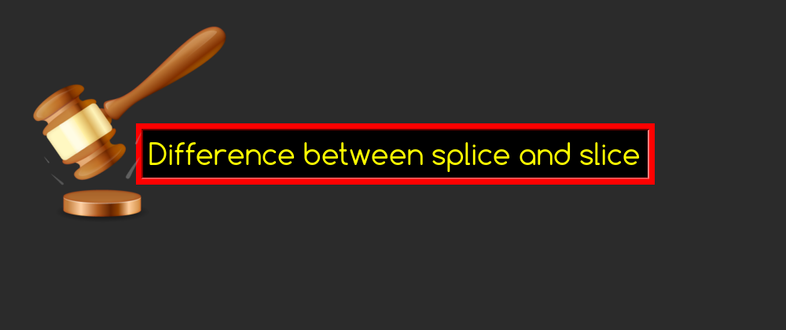
So to insert 'c', you call splice() with a deleteCount of 0 and 'c' as the third parameter. Every parameter to splice() after the deleteCount parameter is treated as an element to add to the array at the startIndex. The splice() function is the only native array function that lets you add elements to the middle of an array.įor example, suppose you have an array and you want to add 'c' after 'b'. He wields the Sun Rod in his left hand and the Moon Rod in his right. On his metal limbs, he has black gloves and black shoes. He has large, reddish-orange eyes with green pupils.

His upper body is rectangular with two thin arms sticking out of the sides. JavaScript arrays have a push() function that lets you add elements to the end of the array, and an unshift() function that lets you add elements to the beginning of the array. Slice n' Splice is a light green, somewhat insect-like, four legged robot. The splice() function also lets you add elements to the middle of the array. On the other hand, `splice()` modifies the array in place.Īrr2 = arr // false Adding Elements to the Middle `arr` still has 'c', because `filter()` doesn't modify the array // in place. Remove 1 element starting at index 2 const arr2 = arr.filter( ( v, i) => i != 2) This means filter() is the better choice for applications that rely on immutability, like React apps. Try it Syntax splice(start)splice(start,deleteCount)splice(start,deleteCount,item1)splice(start,deleteCount,item1,item2,itemN) Parameters start The index at which to start changing the array. The key difference between these two approaches is that filter() creates a new array. The splice()method changes the contents of an array by To access part of an array without modifying it, see slice(). You may see JavaScript projects use filter() instead of splice() to remove elements from an array. The deleteCount parameter tells splice() how many elements to delete. The start parameter tells splice() where to start modifying the array. Syntax slice() slice(start) slice(start, end) slice(start, end, contentType) Parameters start Optional An index into the Blob indicating the first byte to include in the new Blob. It now boasts over 13 million page views per month, a strong ecosystem of documentation and data, and a lively community. The first 2 parameters to splice() are called start and deleteCount. The Blob interface's slice () method creates and returns a new Blob object which contains data from a subset of the blob on which it's called. MDN Web Docs (formerly MDN) was first launched by Mozilla around 2005, and has grown from humble beginnings to being one of the most popular web development resources on the web today.

Here's how you would remove 'c' using splice(): const arr = The splice() function is the only native array function that lets you remove elements from the middle of the array without creating a new array. It is most commonly used to remove elements from an array, but it can also be used to add elements to the middle of an array. Low Level JavaScript is a YouTube channel goes deep into the heart of low level programming - messing with ones and zeros - but all in pure JavaScript.patreo. The Array#splice() function lets you modify an array in-place by adding and removing elements.


 0 kommentar(er)
0 kommentar(er)
